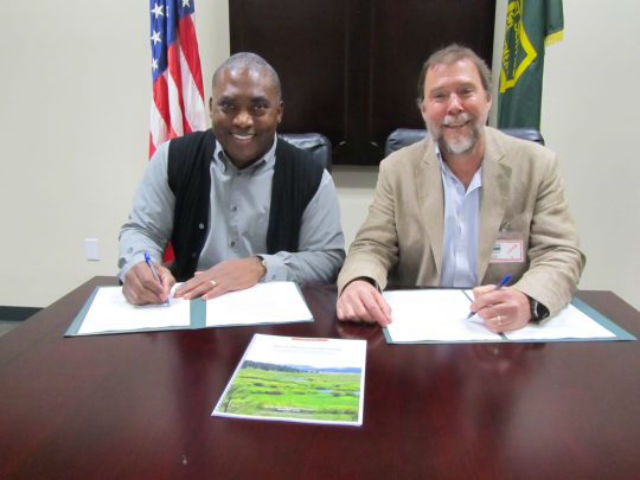San Francisco, CA…Today the Sierra Meadows Partnership, spearheaded by non-profit conservation organization California Trout and comprising a broad coalition of government agencies, scientists, non-profit conservation organizations and other stakeholders, announced the release of the Sierra Meadows Strategy. The strategy outlines an action plan to restore and protect 30,000 acres of mountain meadowlands in the greater Sierra Nevada of California within 15 years.
The Pacific Southwest Region of the U.S. Forest Service and non-profit California Trout also signed a Memorandum of Understanding (MOU) today formalizing a collaborative approach to advance meadow restoration. Other stakeholders interested in working on meadows restoration, including members of the partnership, will be invited to join the MOU moving forward.
“The Sierra Meadows Partnership is taking an ‘all-hands, all-lands’ approach to this effort,” said Mark Drew, Sierra Headwaters Program Director for California Trout. “This strategy is a framework for widespread restoration of Sierra meadows to benefit fish, wildlife and plants as well as millions of Californians who depend on Sierra Nevada water for their health and livelihoods.”
More than 20 partner groups have worked together since February 2014 to produce the Sierra Meadows Strategy. The strategy provides the guidance necessary to achieve an ambitious and effective course of action to increase rates of meadow conservation. By reaching consensus on a path forward, a diverse group of agencies, scientists, and other stakeholders can more effectively leverage resources and strategic changes required to restore and protect meadows throughout the greater Sierra Nevada Region.
This region is the source of more than 60 percent of the state’s developed water supply. It also encompasses a rich variety of natural areas, supporting 50 percent of California’s plant species and 60 percent of the state’s animal species. Sierra meadows cover less than 2 percent of the overall Sierra-Cascade landscape, but they are biological hotspots that sustain the headwaters of several major California water sources.
Like the mountain snowpack that Californians depend on for year-round water, healthy meadows store water and release it gradually. They also filter out pollutants in the process. As the climate warms and scientists project more rain and less snowfall in these mountain ranges, Sierra meadows will become an increasingly important resource for water storage. Of the roughly 190,000 acres of meadows throughout the greater Sierra Nevada, an estimated 40-60 percent have been degraded due primarily to human activity.
“The Sierra Nevada Conservancy (SNC) recognizes the importance of healthy meadows, but unfortunately a significant percentage of Sierra meadows are in a degraded state. The Sierra Meadows Strategy is a timely and important effort to increase the pace and scale of Sierra meadow restoration through a collaborative approach,” said Jim Branham, Executive Officer of the Sierra Nevada Conservancy. “The strategy also supports the SNC’s Watershed Improvement Program, and is an important component in holistically restoring our watersheds.”
The Strategy lays out plans for an ambitious course of action. To achieve its overarching goal will require restoring 30,000 of the estimated 90,000 acres of degraded meadows in the strategy area over the next 15 years. This work will require a multi-pronged approach that includes improving the science and implementation of meadow restoration, helping to improve the efficiency of planning and permitting and building funding, resources and partnership capacity.
“The Sierra Meadows Strategy will guide the protection, restoration and conservation of these critical lands,” said Randy Moore, Regional Forester for the Pacific Southwest Region of the U.S. Forest Service. “The strategy describes our target conditions for restored meadows, and lays out a detailed, actionable road map for getting there.”
For more information about the Sierra Meadows Strategy, or to download a copy of the report, go to http://caltrout.org/wpfb-file/sierra_meadow_strategy_full_report_shareable_mid-pdf/.



